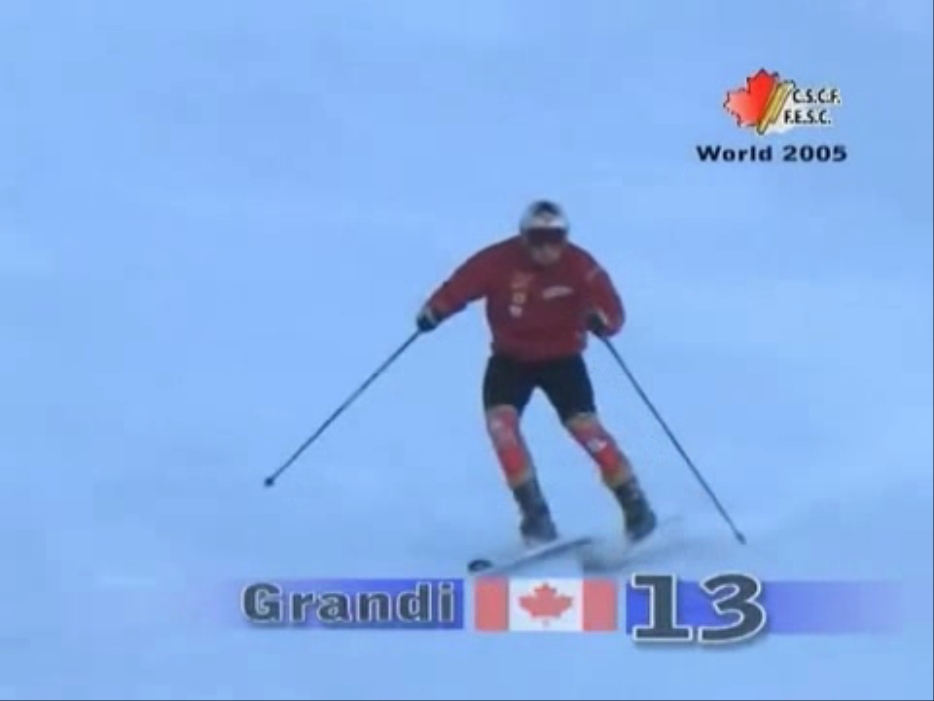Si, ti capisco, a chi lo dici.
così di seguito posto un breviario di alcuni termini usati nel PMTS, che purtroppo non sono tutti.
Chissà che Fausto, magari per Natale (se facciamo i buoni), non ci regali una lista ancora più completa.
Glossary of PMTS Terms
by John Mason » Wed Jan 03, 2007 2:32 pm
PMTS = Primary Movements Teaching System
Primary Movements The primary movements of the PMTS are the most effecient movements a skier can make to produce release, transfer, and engagement.
The primary movements are:
1) Lateral and medial tipping of the foot - inversion & eversion
2) Flexing and extending of the leg
3) Plantar and dorsiflexion of the foot
4) Moving the feet fore and aft (hamstring based foot pull back)
Note: 3 and 4 often happen together
These primary movements are essential for every skiing situation.
Secondary Movements These movements support and enhance the primary movements. Secondary movements include:
1) Counter-Balance
2) Counter-Acting
3) Effecient arm and hand movements
Stance Foot This is the foot that is supporting most of your weight. For most people and at most times this is the ski that is tracing the outside arc of your turn. The reason terms like outside or inside is not used, is that in turns like the Super Phantom, the stance ski changes before the old turn ends.
Free Foot This is the foot that is not the stance foot. The free foot, being not weighted or lightly weighted is very easy to tip, pull back, etc. Most of the focus in PMTS sking is on Free Foot actions which result in changes to the Stance Foot via the kinetic chain.
Kinetic Chain This is the linkage of the body's skeleton. Obviously a person can make their body be like a rubber, oozing slimewad and have no kinetic chain. Co-contraction around joints to some degree is what gives you great stength for support and balance as well as making your Kinetic Chain work. The lack of co-contraction encouraged by a TTS approach limits efficient use of the skeleton in skiing.
Phantom Move Tipping in the stance foot can be controlled indirectly by tipping the free foot via the kinetic chain. This almost magical move is one of the first moves taught in PMTS. When you see phrases like tip and tip even more as the turn progresses, the focus of this tipping is on the free foot as PMTS skiers know the stance foot will follow.
Counter-Balance (CB) This secondary movement enhances edging/tipping of your skis by creating a c-shape with the body. This type of secondary movement really helps making clean railroad turns or in low energy turns at transition. (railroad turns - turns fun to play with on cat-tracks or gentle slopes where the speed of the turn is so slow, you are not inside of the skis - edging can not be created by inclination in these turns - counteracting - counter balance - tipping the free foot are used for all of the edging).
Counter-Acting (CA) - or sometimes just called Counter This is when the hips are pointing to the outside of the turn. If you do this and keep your feet lined up (rather than letting your inside foot creep forward) will allow you to generate with balance more tipping/edging then if you don't point your hips to the outside of the turn.
Both CB/CA are described in more detail by clicking on this link:
PMTS.org • View topic - Counter and Counterbalance
RTE - Release-Transfer-Engage This is the normal order of events to end one turn and start the next. The old turn is released by flexion of the stance foot while tipping that old stance foot. This releases - ends the turn. The skis go through flat - the transfer of edges occurs. The new edges engage and pull you into the new turn. Curiously, many skiers ski with no release in the PMTS sense of the term.
SPT - Super Phantom Turn
WR - Weighted Release
OFR - One Footed Rlelease
TFR - Two Footed Release
BTE - Big Toe Edge
LTE - Little Toe Edge
BPST - Bullet Proof Short Turn
Flex = Bend



